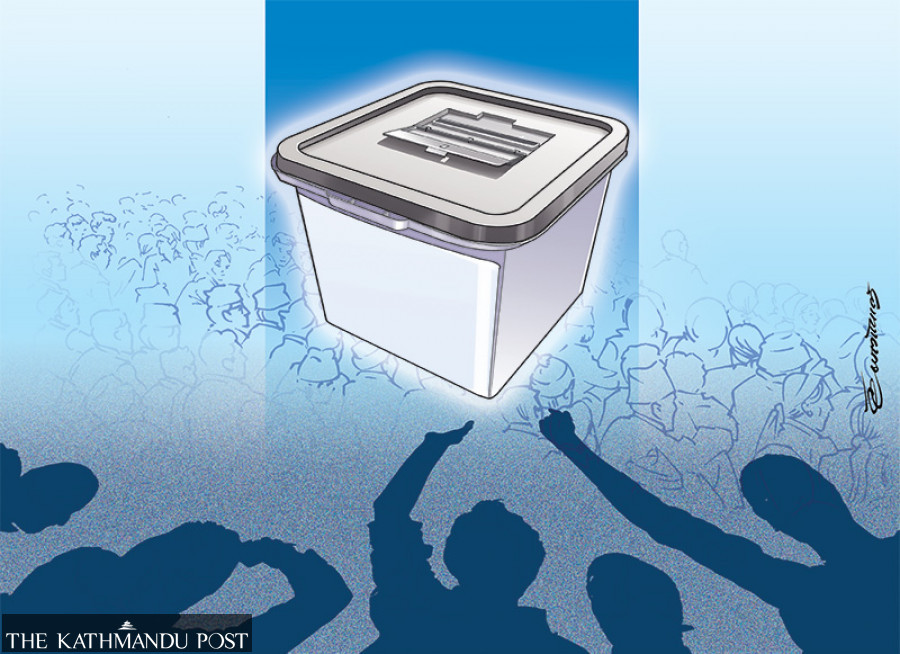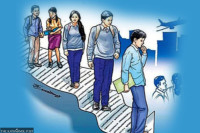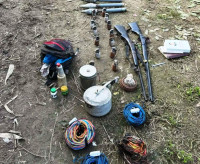National
Will people from Kalapani region get to exercise their franchise?
There’s no voter list update. Nor does the poll body know which local units it is supposed to conduct elections in.
Prithvi Man Shrestha & Anil Giri
Nepalis on May 13 will vote to elect new representatives for local bodies, second time since the 2015 constitution guaranteed Nepal as a federal republic. The country this year will also hold two other elections—parliamentary and provincial.
The May 13 local elections are, however, being held for the first time since Nepal claimed Kalapani, Lipulek and Limpiyadhura, over which India has maintained control for decades, as Nepali territory.
Nepal’s Parliament in May 2020 endorsed the second amendment to the constitution to update the country’s new political map in the national emblem, asserting that Kalapani, Lipulek, and Limpiyadhura belong to Nepal.
Nepal, however, failed to conduct census in the region through physical presence of enumerators last year in November. According to a preliminary report published by the Central Bureau of Statistics, the agency that conducted the census, around 750 people are estimated to be living in the region.
Now, when local elections take place on May 13, will the people living in the area be able to vote?
“If we claim Kalapani, Lipulekh and Limpiyadhura as our territory, people living there have their constitutional right to participate in the franchise,” said Neil Kantha Uprety, former chief election commissioner. “The Election Commision must make arrangements for them to participate in the political process.”
The election body, however, has not updated the voter roll even though the country brought the area within the Nepali territory, at least on the map, a little less than two years ago.
As per the law on voters’ list, the commission halted updating the voter roll after local elections were announced on February 7.
The last time people from the region had participated in an election was in 1959, according to officials and experts.
“It will be a big achievement if we can ensure participation of even just five people in the elections from the region to assert our claims over the territory,” said Upretry. “If we continue to give up our claims, we will be at a more disadvantageous position in the future.”
A former commissioner of the election body also stressed the need for holding elections with participation of all the people of the country including from Kalapani, Lipulekh and Limpiyadhura areas.
“If the voters’ list has not been updated by incorporating people of these areas, efforts should be made to enroll them and hold elections in any other time if not possible on May 13,” said the former commissioner who wanted to remain anonymous.
These two former election officials said that people of this region could be enrolled in the voters’ list even after the election dates are announced by amending the existing laws.
“In 2017, local elections were held in three phases; a similar model can be applied to hold the election in the Kaplani region too,” said Uprety.
Officials at the commission said that there is no plan to hold elections in the region despite bringing the territory within Nepal cartographically. They said that the government needs to do a lot of homework before people of the region can be able to cast their votes.
“Firstly, Nepali citizenship certificates should be distributed to the people of the region because without citizenship certificates, one cannot be enrolled as voters,” said Chief Election Commissioner Dinesh Kumar Thapaliya. “The government should first ensure how many local bodies are there and which local governments fall under the region we are talking about.”
According to the last update, there are a total of 61 wards in Darchula district, where the Kalapani, Lipulekh and Limpiyadhura fall.
When it comes to holding elections, the issue, however, concerns just three villages in Vyans Rural Municipality—Kuti, Navi and Gunji.
The Election Commission says it wants clarity from the government under which local government or ward these areas fall.
“To which local government or wards the Kalapani, Lipulekh and Limpiyadhura belong?” Thapaliya asked.
He said that the commission is ready to send election officials to distribute voters’ lists if the government deploys a team to distribute Nepali citizenship certificates to the people in the region.
According to the commission, it does not have a voters’ list of 1959 which included the voters of the Kalapani, Lipulekh and Limpiyadhura areas.
Thapaliya said they searched for the voters’ list of the first general elections held in 1959 but could not find it.
“We found the voters’ list of the elections in 1991 and 1999 in the national archive,” he said.
A government official in Darchula said ensuring people from some villages in the district that they can vote will be challenging.
“The last point that Nepal controls near the Nepal-India border in Darchula district is the Chharung area which is now cut-off due to snowfall,” Dirgha Raj Upadhyaya, chief district officer of Darchula, told the Post over the phone. “Though we have the new map incorporating Kalapani, Lipulekh and Limpiyadhura as Nepali territory, the Indian side still holds the administrative control over the region.”
Upadhyaya said he himself is wondering how elections could be held in the region in question.
“India controls the area and has deployed over 2,500 security personnel there,” said Upadhyaya. “It is difficult for us to reach there. Still we have some time before elections are held, so there is room for us to take initiatives from the higher level to come up with a way to ensure that people from the region can vote.”
The region is remote and there is no land route via Nepal to reach the villages. People living in the region have to travel via India even to reach their district headquarters. If India stops movement for any reason, people from these remote villages have to undertake an arduous journey through a treacherours foot trail.
When Nepal was conducting the census in November last year, enumerators faced challenges. The Indian authorities failed to provide an entry permit as the designated official was busy overseeing a festival. Two enumerators had walked for days to reach the villages.
The Central Bureau of Statistics, however, said the population count in the region was conducted through “indirect means”.
“The population in the region is around 750,” an official at the Central Bureau of Statistics, who was involved in conducting the census in the region, told the Post. “Information about the population in the region was collected through informal channels such as taking information from people of the bordering region, their relatives and Nepali security agencies.”
After the sixth national census in 1961, people living in the Lipulekh, Limpiyadhura and Kalapani areas were never counted.
Nepal’s move to update its map to include Lipulekh, Limpiyadhura and Kalapani inside Nepali borders had led to souring of ties with India.
The then KP Sharma Oli government had taken the decision following India’s inauguration of a road link via Lipulekh to Kailash Manasarovar in the Tibet Autonomous Region.
The Kalapani region has remained an irritant in Nepal-India relations for decades. The issue becomes a highly nationalistic subject, but successive governments in Nepal have done precious little to give the people living in the region a sense of belongingness.
In November 2019, when India unveiled its new political map showing Kalapani within Indian borders, it stirred protests in Nepal.
Delhi cold-shouldered Nepal’s requests for diplomatic talks. After Nepal published the new map by including the region, India called it cartographic assertions.
Only recently, the Sher Bahadur Deuba government faced criticism for failing to respond to Indian Prime Minister Narendra Modi’s statement on expansion of the road via Lipulekh.
Nepal’s political parties took umbrage at Modi’s statement, calling it uncalled for, and demanded that the Sher Bahadur Deuba government make a position and respond to India.
Nepali officials and experts say that Nepal should make continuous efforts to strengthen its position to find a diplomatic solution to the longstanding issue.
“Due to potential obstructions from India’s Sashastra Seema Bal for people to travel in the region, holding elections in normal circumstances may not be possible in the near future,” said Buddhi Narayan Shrestha, an acclaimed cartographer and a former director general of the Department of Survey. “But the Election Commission should make efforts to at least enroll the people of that region in our voters’ list.”
Shrestha said that the voters from the region could be enrolled by using local connections if India obstructs Nepal from updating the voters’ list.
Observers say an election is not just a political process that strengthens democracy but is also an exercise that values its citizens.
Bhojraj Pokharel, former chief election commissioner, said every eligible adult of the country should be ensured by the state that they can enjoy their right to vote.
“If we want to hold elections in the Kalapani area, we have to have an updated list of the voters. We need to ensure that they have their voter identity cards,” Pokharel told the Post. “If the population in that area has obtained voter identity cards, the government must make sure that they get the chance to vote.”
According to Pokharel, if the territory is claimed, it’s the duty of the state to say the people living in the area are citizens of the country and they should be the voters.
Election officials said they are committed to ensuring that whoever possesses a voter identity card should be able to vote.
“Since we did not know under which local unit the Kalapani area falls, we could not include the people living in the area in the voter roll,” said Thapaliya. “For a citizen to be able to vote, she/he needs a voter ID for which a citizenship card is a must. Our duty is to conduct the election across the country, and we will ensure everyone with the voting card gets a chance to vote. We can’t do what is beyond our jurisdiction.”




 19.12°C Kathmandu
19.12°C Kathmandu


%20(1).jpg&w=200&height=120)













